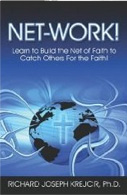The Passion of Jesus
Jesus' Crucifixion From A "Medical" Point of View
Warning! This article is not for the faint of heart, it is graphic!
Matthew 26:17-27:61, Mark 14:12-15:47, Luke 22:7-23:56, John 13:1-19:42
With the popular move "The Passion" coming out many people are wondering what really happened to Jesus in those last 12 hours. Perhaps you are wondering too? We are going to take a real hard look at the Crucifixion of Jesus from a Medical Point of View.
When I was in college, more than a few years ago, I was a pre-med student studying biochemistry. This was around 1982 when I was also a fairly new youth pastor and about to give one of my first sermons. Being also a Christian in a secular university, I was inundated with callous remarks and pondering questions about my faith. I sought for a different direction in the typical Lent teaching (I was in an high Liturgical Episcopal church at this time), aspiring to teach my youth what had happened to Jesus, physically, while He was on the cross. And, because I was studying anatomy and physiology, I was also curious about what had happened to Jesus.
After doing a lot of research, I found little or no information on this subject. So, I decided to "kill two (or three) birds with one stone," so to speak. I wrote a paper for a physiology class, prepared a few Sunday school lessons for Lent, and prepared a great sermon, or so I thought. I interviewed several physiologists (people who have a Ph. D., do medical research, and/or teach in a medical school about how the body works. They are far more educated in biomechanics than most medical doctors are). I also sought advice from many anatomy books and took a step-by-step approach on what happened, following the account in the book of Luke.
After several weeks of high-speed and intense research, the paper was an A, the sermon went off as my first bomb (Too gory for the old folks; I was not asked to preach until several months later), and the youth really got into it.
I was amazed and fixated on one thing that kept going through my mind as I researched, wrote, and taught on this subject. Jesus did this for me! He hung on that cross, and went through all this heinous, physical agony of the worst and most intense pain ever devised as torture that a human could conceive and be subjected to. He did this all for me; He took my place; He endured, as an innocent Person, what I deserved as a sinner. He accomplished, by Grace, what I should have born myself. And even now, mere words cannot convey my thoughts, my wonder at this fact. So, I recently rehashed my old paper, and added a lot of new insights that have come onto the scene since. I even discovered a major medical paper published in the Journal of the American Medical Association, which is one of the biggest and most prestigious medical publications in existence. "Where were these when I needed them?" I thought.
I grew up in a church where I saw the crucified Lord hanging on a cross every week. We reenacted His death and suffering in our Liturgy every Sunday. The events leading up to the cross were played out every Lent, year after year. Most of us just said the words without any thought, almost a form of rhetoric, without any deep meaning. Even though those words were infused with beautiful poetic words fully explaining why, and what our Lord did, I only knew that He was crucified, but not what that entailed. In my research, I realized that I took what Jesus did for granted. I never really thought it through what He went through, what He did for me, either as a med student, or as a Christian. I did not realize what that cross really meant. It was a device meant for punishment and pain, used for redemption and salvation.
The people in Jesus' time fully knew what that meant; there was no reason for further explanation by Scripture. But, for us today, removed by nearly two millennia, perhaps a deeper look on what happened is needed. You may wonder, "Why this subject? Is this necessary?" as those church ladies did two decades ago, and threw quite a "hissy-fit" with me. Maybe I was a little too bold with them, as passion and excitement from my youth got away from me. But, I believe they were offended because they did not want to know, lest it would force them to examine themselves and their spiritual condition. We may understand the theological ramifications, but as humans in physical bodies ourselves, we can even further identify with our Lord and gain a deeper appreciation for what He did for us by knowing what He went through in our place.
First of all, when we look upon the cross as a symbol of our faith and the crucifixion it represents, we have to realize it is an icon for what was, at one time, the most brutal torture ever conceived. It was a symbol of absolute terror. The Romans, who acquired the practice from the Arabians, Carthaginians, and Persians, would set these crosses up within the city limits of pre-conquered areas and randomly crucify some of their inhabitants, just to keep the rest in line. This caused the rest of the people to be in fear and easily conquerable, as practiced by Alexander the Great. The Romans saw this as a good idea then took it and even improved it. Subsequently they instituted the same practice and used them for capital offence for non-Roman people accused or of a crime. It was most effective!
What the Crucifixion looked like
The picture of the Good Friday scene shows Jesus hanging on a cross between two other men who were criminals. This cross that most people have in their minds is the Roman type that hangs in most churches today. But, this is not the only type of cross. There were many types and shapes for the cross. Here are a few with their Latin titles: cross beam cross (patibulums), pikes (stipes), T's (Tau), X-shaped (decussata), tree (lnfelix lignum), and the Roman cross (sublimis and topiin) that we use today as our symbol for faith. Most scholars say the cross we have today is a fairly accurate description of the one used for Jesus; however, others maintain it was a "T" type.
The type is irrelevant to its function, and what it did to our Lord. We do know that Jesus did not carry the entire cross. It was too big and heavy. The post, called the stipes, was already fixed permanently in the ground and would have been used for previous executions. When we read that Jesus carried the cross, it refers to the crossbeam called the patibulum, which weighed over one hundred pounds. Image how much a full cross would have weighed! Thus, when our Lord was forced to carry the cross, He actually carried the crossbeam.
Another image we have, in many paintings and frescos, shows the nails driven through the palms of His hands. Historical Roman records (and they kept very good records) tell us that the nails were driven between the radial and ulna bones in the forearms, between the elbow and the wrist. The thought that the nails were in His hands comes form the passage Luke 24:40, "he showed them his hands and feet." The Jews and Romans considered the wrist to be part of the hand; there was no separate word for it. If the nails were impaled in the hands, the person would fall off the cross; there would be nothing strong enough, such as bones and ligaments, to hold up the weight.
On top of the cross was a small sign, called a titulus, depicting the name of the person and his alleged crime. This came from the prison where he had been imprisoned, and was carried on a staff in front of the procession. This procession had the floggers, soldiers, executioner, city officials, and the victim/criminal, carrying the crossbeam. Beside the road, watching, would have been the family, friends, and all the towns people, either enjoying or being terrified by the show. This sign was later nailed to the top of cross above the victim's head so it was in plain sight. The Romans were very good at promoting this and using it as a deterrent to future crimes and insurrections.
After the procession, the victim was nailed to the crossbeam. His arms may have been tied down, also. Then the person, attached to the crossbeam, was lifted, and the crossbeam was placed in the notched cutout toward the top of the pike part of the cross, and then tied in. Now we have our quintessential Easter scene, the end of the Passion of our Lord, and the beginning of His saving grace in us.
The Events Of Suffering, Leading Up To the Words, "It is finished."
The Passion, the phrase/word expressing the events leading up to the crucifixion, starts in the garden of Gethsemane. Luke, a physician, writes in the gospel of Luke more detail about Christ's physical experience than do the other three Gospel writers. The first account we have of Christ's sufferings is the sweat (Mark 14:32; Luke 22:39-45; John 18:1). Luke describes this as, "His sweat became as drops of blood, trickling down." This phenomenon is called "Hematidrosis," or commonly referred to as "bloody sweat." It is a real, medical ailment, and is well documented. It is interesting that many liberal scholars, who have no medical knowledge or research skills, say this event could not have happened! Anyway, it does happen, although it is rare. When someone is under great emotional stress, the minuscule capillaries that are in and around the sweat glands (some as small as the width of the blood cells) will break, and some blood mixes in with the sweat. The result is, sweating blood! Our Lord was suffering in agony, not trying to escape His call and plan, but asking if there were an alternative way, as well. He was going to face the ultimate terror. He would experience not only the pain, but also the rejection of the Father, and His divine anger for sin (Psalm 75:8; Isa. 51:17; 22; Jer. 25:15-16; Ezek. 23:33; Rom. 8:17; 1 Pet. 2:21). He knew the pain He, being fully man, was going to experience and endure. Being fully God, He could have escaped it. So resulted the traumatic struggle. He chose to go to the cross in our behalf, and be obedient to the plan for our redemption--in the only way it could have been done.
This "blood sweat" of stress and intense prayer happened during the middle of the night. While His disciples did not have the courtesy to wait up with Him, a mental trauma of anguish and betrayal occurred (Matt. 26:36-45). The Roman soldiers and government officials came, by means of Judas' lead, to arrest our Lord by the hour of darkness (Luke 22:52; Eph. 6:12; Col. 1:13). Further betrayal. Jesus was then brought before the Jewish rulers, the Sanhedrin, at the home of the High Priest, Caiphus. He was subjected to more physical trauma--this time by the hands of others--people whom He created and loved! When Jesus remained silent at the questioning of Caiphus, a soldier brutally struck Him across the face. Then our Lord was subjected to more humiliation. He, being God incarnate, was mocked by the extraordinarily inferior palace guards, who blindfolded Him, contemptuously teasing and making sport of Him. Then, all took turns hitting and spitting upon Him. This continued from the late hours of the night to the early hours of the morning.
Then, Jesus was taken to His first Jewish Trial across the "Praetorium," the Fortress Antonia, where Pontius Pilate resided. Undoubtedly, Jesus was very dehydrated, exhausted, and bruised from His battering and the lack of sleep. He was also suffering because of the betrayal of His trusted disciples, who acted in harshness, and then ran from Him (Luke 2251- 71). Then, He was taken to the Roman trials. Now we have a passing game, between the local government and religious leaders to the Procurator of Judea, Antipas, the Tetrarch of Judea, as well as from Pilate to Herod. It was a back-and-forth game among people who refused to take responsibility. Both Pilate and Herod faced insurmountable pressure from the Romans to keep the insurrections and the religious fundamentalism down, lest they be removed from office, or even lose their life. They knew of Jesus' popularity and did not want to incite the religious leaders or the people, so they passed Him off to one other, hopeful that someone else would take the possible fall. Jesus was finally returned to Pilate, who was forced to execute Him. Pilate knew Jesus was innocent, and publicly offered His release, but the religious officials and Romans in the audience were inciting the mob to cry for the release of Barabbas instead. So, Pilate washed his hands of the matter, still refusing to take responsibility, and condemned our Lord to scourging followed by crucifixion. Jesus suffered further humiliation and one of the worst stresses a person can go through--political bickering! Here, Jesus is suffering from all possible forms of sufferings from all three categories--that of emotional, physical, and spiritual, and all that each of these entails. He was just coming from a suffering, currently experiencing a suffering, and going into more suffering! There was no suffering that our Lord was not experiencing at this time-- and all at the same time!
Because it was unusual for criminals to be both scourged and crucified, some scholars attest that other events must also have taken place. Some scholars feel that Pilate was a victim of the political machine of his time. They think he had Jesus charged, even though he was "not guilty," then had Him illegally flogged by one or two soldiers in order to satisfy the chief priests. This flogging would have caused deep contusions. Some say this scourge was to be a full payment so He would not have to be killed. However, the mob incited a riot, so he had no choice but to have Jesus crucified. The Bible does not say this, nor do the Early Church Fathers, who point to Pilate in their writings and creeds as the one responsible. We can never forsake our actions by blaming others or the situation! But, remember; Jesus claimed, as did His followers, that He was King of the Jews (Luke 23:1-5). According to Roman law, and in defense of Caesar, the Procurator Pilate would have had to dish out all the punishment at his disposal, and in the slowest way, leading to death of the pretender who made such a claim. Pilate did just that. He was in a position to either let Jesus go or to follow the edict.
Scourging was a long process of whipping, where the victim's clothes were torn off (cloth was the most expensive possession in those times--equal to a car for us--showing an economic loss, too), then His hands were tied to a pike above His head (1 Peter 2:24). Most commentators insert that the Jews had a law prohibiting more than forty lashes. However, it was the Romans who inflicted the punishment and they had no regard for Jewish law; they did as they saw fit. Our Lord Jesus Christ, Savior of our souls, was brutally whipped with a flagellum, a "cattail" which was a short whip of several heavy tentacles where the ends were tied with small balls of lead, rocks or bone fragments. At first, the whipping action would pound the shoulders, back, and legs, as a butcher would tenderize a piece of meat. It produced deep, large, painful bruises, intense pain, and appreciable blood loss from another form of hematidrosis, and most probably would have left Jesus in a pre-shock state. As the whipping action continued, it would cut deeper into the subcutaneous tissues, thus producing a discharge of blood from the capillaries and veins of the skin and then causing stripe-like lacerations, finally spurting arterial bleeding from larger vessels in the underlying muscles. This action literally tears the flesh off His back, exposing the muscles, and maybe a rib or two. The flesh from the back would hang in long ribbons and would look like a mass of torn, bleeding muscle. The person(s) doing this torture was a trained centurion, and when the victim was near death, the beating would be stopped. They were also careful not to puncture a lung, as that would have killed the victim and ended the intended, prolonged agony.
During this incredible agony, the pain would be overwhelming, causing Jesus to slip in and out of consciousness. After this whipping, they would untie Him, causing Him to slump to the ground, lying in Hs own blood. The soldiers, acting with a mindset of sadistic sport and contempt towards Jesus, propped Him up and placed a robe across His shoulders that was made of mohair, a very harsh, prickly fabric from camels, that would have adhered to the clots of blood and serum in the wounds, further tearing into the flesh as they put it on and took/tore it off, causing further bleeding and pain. This pain could have been the most excruciating of all! Imagine tearing off a piece of tape on a wound or scab-and multiply it hundreds of times!
The soldiers then placed a scepter in His hands, hands that were aching from the leather straps holding him to the pike as they whipped Him, and then they pressed a crown of sharp thorns into His scalp. These thorns were nasty, and of no use commercially, except for firewood. The head is one of the most vascular areas of the body, and a single thorn--let alone several--would have caused a lot of copious bleeding. The solders continued to mock our Lord and hit Him across His face. They even took the scepter and used it as a hitting devise, driving the thorns deeper into His scalp, pressing into the skull, causing extreme bruising and swelling all over the face and head. By this time, Jesus would have been unrecognizable.
The Roman soldiers placed Jesus' torn clothes back on Him, picked up the crossbeam, and tied it to His arms, across His shoulders. He was in excruciating pain and perhaps still drifting in and out of consciousness, as He not only had received no sleep for over twenty-four hours, but also had been subject to constant torment and torture, along with mental and spiritual exhaustion. He was led into the procession carrying the heavy patibulum of the cross, perhaps alongside the two thieves. This is called "The Journey along the Via Dolorosa," meaning "The Way of Suffering." Jesus would have continued to bleed because of the pressure from the weight of the rough wood of the heavy crossbeam gouging into what remained of His skin, causing lacerations in the skin and muscles of the shoulders, and more copious blood loss. Thus, His muscles were pushed beyond their endurance into hypovolemic shock. He then stumbled and fell under this agony, in spite of His efforts to walk straight. The centurion, who was perhaps anxious to get on with the crucifixion, enlisted some help. As the Scriptures tell us, they seized Simon from Cyrene, who was on his way in from the country, and put the cross on him (Luke 23:26). Jesus was unable to carry the load. His body would at this time, if not before, have been going into a state of severe trauma and shock. Keep in mind--He was a "man's man," very fit as a carpenter in a time of no power tools, and was always walking. He would have been in top-notch physical condition. He was no weakling, as some have suggested!
Jesus continued His 650 yard journey from the fortress Antonia to Golgotha, where the cross lay. He literally went to the cross by following the cross. He was still in a state of shock, bleeding, sweating, and experiencing chills from the trauma. He was then nailed onto the crossbeam, through His wrists, with large, heavy, square, wrought iron nails approximately five to seven inches (13 to 18 cm) long with a square shaft 3/8 inch (1 cm) across--the size of railroad spikes. These spikes are what were driven through the body and deep into the wood of the cross. Several soldiers, using large wooden forks, ladders, or ropes, lifted him up. The sensation and pain of these spikes being driven though would have been indescribable. The soldiers would have been careful not to pull the arms tightly, but allow them some movement. This would have caused even more trauma, while His shoulders were quickly thrown backward against the hard, wooden cross as He was being lifted. The crossbeam was placed in the notch, and tied. Then His left foot was pressed backward against a block (suppedaneum) used as a sadistic foot transfixion rest, a Roman improvement to prolong the crucifixion. Then, with feet on top of each another, His knees extended, and His toes facing down, they were nailed through the arches of His feet into the bottom block with one nail-spike. The knees were left bent so they could flex. Jesus was then offered gall, wine vinegar mixture with myrrh. This was an act of compassion by a soldier, as it offered a mild analgesic. Or, it could have been due to further sadistic prowess so as to increase the length of His stay on the cross. Jesus refused to drink it, not accepting any short cuts or yielding to their vicious intentions. Lastly, the mocking sign, "Jesus of Nazareth, King of the Jews," was nailed above His head on top of the stipes and the titulus of the cross. Jesus was now crucified!
As our Lord hung on the cross, He would have struggled to lift His body as it tore from the spikes driven in His wrists and feet. He would have had to do this for each breath, pulling Himself up and down. Without doing this, air could not get into the lungs nor could it be exhaled. This would have caused periosteal injury on the ligaments while placing pressure on the median nerves, causing extreme, searing, excruciating pain shooting along the fingers and up the arms to the brain and back. This was in addition to the deep, relentless, throbbing pain and agony of the nails, tearing through the nerves between the metatarsal bones of the feet and the between the radius and ulna and the carpals in the forearms and wrists. The death of crucifixion is not by the trauma or blood loss, it is by the suffocation due to the body, in shock, unable to move to prop itself up to breathe. Jesus would have been pushing Himself upward to avoid the pain and lowering Himself to take a breath.
His pectoral muscles would have been paralyzed and the intercostal muscles unable to act, virtually every muscle in His body would have begun to cramp and fatigue until He was unable to push Himself upward, and hypercarbia would result. Towards the end, He would only be able to get one, short breath at a time. Carbon dioxide would build up in the lungs, forcing His body to convulse to try to get more oxygen. During this period, our Lord had sympathy for the soldiers who were casting lots (as in throwing dice) for His garment, and He said, "Father, forgive them, for they do not know what they are doing." Then, as the two thieves were arguing, one acknowledged who He was, and Jesus told him, "I tell you the truth, today you will be with me in paradise." He saw His mother and the beloved disciple, John, and asked John to take care of His mother (John 19:25-27). Even while in extreme agony, Jesus' concern was for others: a criminal, and His mother!
Jesus speaks for a recorded fourth time, a cry from Psalm 22, "My God, my God, why has thou forsaken me?" This was His greatest agony, as He had to be separated from the Father for the first and only time in eternity. God cannot look upon nor be touched by sin, and Jesus bore it all--every sin that had been committed, was being committed, and would ever be committed. Jesus had been hanging on that cross for hours with a lacerated, bruised, and beaten body that was twisting, cramping, convulsing, and in partial asphyxiation while struggling to take every breath. Some insects burrowed themselves into the open wounds; others would go into the eyes, ears, and nose.
Now it is almost over, and a dreadful, crushing pain, deep in His chest, emerges as the pericardium slowly fills with serum and begins to compress the heart. As it struggles against being compressed, it tries to pump the thick and sluggish coagulated blood into His tissues. His distressed lungs are making a frantic effort to gasp any oxygen it can. His body is very dehydrated, as it has lost most of its vital fluids. Jesus is code blue--critical beyond critical. Then Jesus gasps His fifth cry, "I thirst." He realized that a final cry would proclaim His triumph, yet He needed fluids to arouse His body to do so. A soldier gave Jesus a sponge soaked in posca, an old, bad, sour wine that the solders drank; in contrast to the marvelous wine He made for His first public miracle, the wedding feast (John 2:1-12; 19:28-30).
Jesus is now at death's door! Jesus summoned the remainder of His energy to once again press His torn feet against the spike, straighten His legs to take a deep breath, and uttered His last and final cry, possibly no more than an agonized whisper, "It is finished," and "Father! Into thy hands I commit my spirit." And so it was, His mission to redeem our souls was accomplished, and later proven when He rose from the grave to proclaim our call to tell the world (Matt. 28: 18-20).
Because it was nearing Passover, the soldiers broke the legs of the two thieves to expedite their deaths. But, when the soldiers came to Jesus, they saw that He was already dead. Jesus was on the cross for only three to six hours, and His quick death surprised even Pilate. Perhaps Pilate did not take into consideration all the wounds and trauma Jesus endured on the way to the cross. The fact that Jesus cried out in a loud voice and then bowed his head and died suggests the possibility of a catastrophic terminal event.
The general method of ending a crucifixion was by crurifracture, which is to break the persons leg bones. That way, they can no longer lift themselves up and they die from asphyxiation. The soldiers discovered, as they were about to break His legs, that He was already dead. However, to make darn sure, one of the soldiers, out of rage or sport, thrust a lance-a spear--into His side. The probable path of the spear would have been the right cross-section of the thorax, at level of plane (logical direction of impact from physics) piercing His heart through the fifth interspace between the ribs, upward through the pericardium, and into the heart, where blood and water flowed out (John 19: 34). This proves Jesus was not in a coma, but dead. Some scholars debate over whether Jesus died from the spear, from a heart attack, or of suffocation. To put to rest this controversy--the wound was far away from the abdominal midline, even though some suggest that the spear killed Jesus, and the water was urine. The Greek word for water and urine are not the same! But, the important aspect is not how Jesus died, but that He died for you and me.
According to those physiologists I interviewed, Jesus did not die from suffocation as most victims of crucifixion did. Rather, He had cardiac rupture or cardio respiratory failure, associated hypovolemia, hyperemia, and an altered coagulable state. Also, friable (brittle), non-infective, thrombotic vegetations could have formed on the aortic or mitral valve, aggravated by His state of exhaustion and the severity of the scourging. Jesus died of heart failure! This is evidenced by the presence of water, which is caused by the shock and constriction of the cardiac tissues being filled by fluid from the pericardium.
Our Lord died from a broken heart caused by our sin!
Next time you look upon a crucifix, even if you are a Protestant as I am, perhaps you can see what our Lord did for you!
22nd Psalm
My God, my God, why have you forsaken me? Why are you so far from saving me, so far from the words of my groaning? O my God, I cry out by day, but you do not answer, by night, and am not silent. Yet you are enthroned as the Holy One; you are the praise of Israel. In you our fathers put their trust; they trusted and you delivered them. They cried to you and were saved; in you they trusted and were not disappointed. But I am a worm and not a man, scorned by men and despised by the people. All who see me mock me; they hurl insults, shaking their heads: "He trusts in the LORD; let the LORD rescue him. Let him deliver him, since he delights in him." Yet you brought me out of the womb; you made me trust in you even at my mother's breast. From birth I was cast upon you; from my mother's womb you have been my God. Do not be far from me, for trouble is near and there is no one to help. Many bulls surround me; strong bulls of Bashan encircle me. Roaring lions tearing their prey open their mouths wide against me. I am poured out like water, and all my bones are out of joint. My heart has turned to wax; it has melted away within me. My strength is dried up like a potsherd, and my tongue sticks to the roof of my mouth; you lay me in the dust of death. Dogs have surrounded me; a band of evil men has encircled me, they have pierced my hands and my feet. I can count all my bones; people stare and gloat over me. They divide my garments among them and cast lots for my clothing. But you, O LORD, be not far off; O my Strength, come quickly to help me. Deliver my life from the sword, my precious life from the power of the dogs. Rescue me from the mouth of the lions; save me from the horns of the wild oxen. I will declare your name to my brothers; in the congregation I will praise you. You who fear the LORD, praise him! All you descendants of Jacob, honor him! Revere him, all you descendants of Israel! For he has not despised or disdained the suffering of the afflicted one; he has not hidden his face from him but has listened to his cry for help. From you comes the theme of my praise in the great assembly; before those who fear you will I fulfill my vows. The poor will eat and be satisfied; they who seek the LORD will praise him-- may your hearts live forever! All the ends of the earth will remember and turn to the LORD, and all the families of the nations will bow down before him, for dominion belongs to the LORD and he rules over the nations. All the rich of the earth will feast and worship; all who go down to the dust will kneel before him-- those who cannot keep themselves alive. Posterity will serve him; future generations will be told about the Lord. They will proclaim his righteousness to a people yet unborn--for he has done it. (NIV)
References
Original Research
- Interviews with Physiologists in a university and medical school 1982.
- Consulted medical anatomy and physiology textbooks.
- The Resurrection Factor, San Bernardino, McDowell J: Ca, Here's Life Publishers, 1981.
- Historical Evidences for the Christian Faith & Evidence That Demands a Verdict, McDowell J. San Bernardino, Ca, Here's Life Publishers, 1979.
- On death by crucifixion, American Heart Journal, Tenney S. M: 1964; 68:286-287.
- A doctor looks at crucifixion, Christian Herald, Bloomquist E. R. March 1964.
- Researched into ancient Christian, Jewish, and Roman texts that provide additional, firsthand insights concerning first century Jewish and Roman legal systems and the details of scourging and crucifixion:
· Seneca, Livy, Plutarch refer to crucifixion practices
· Roman historians Cornelius Tacitus, Pliny the Younger, and Suetonius
· Non-Roman historians Thallus and Phlegon
· The satirist Lucian of Samosata
· The Jewish Talmud
· Jewish historian Flavius Josephus
· The Shroud of Turin although not proven authentic gives considerable insights
Revised Research
Articles:
"A Physician Testifies About the Crucifixion" by Dr. Pierre Barbet, a French surgeon Doubleday Image Books Garden City, NY, 1953, pp 12-18 37-147,159-175, 187-208.
"Medical Account of Crucifixion" Dr. C. Truman Davis "an American Ophthalmologist Ariz Med 1965; 22:183-187
"On the Physical Death of Jesus Christ"William D. Edwards, MD; Wesley J. Gabel, M Div; Floyd E. Hosmer, MS, AMI 1986
Journals:
- "Death by Crucifixion" De Pasquale NP, Burch GE American Heart Journal 1963; 66: 434-435
- JAMA Journal of the American Medical Association and the Mayo Clinic, Rochester, MN 55905 (Dr. Edwards) March 211986
Additional research sources:
- "A case of haematidrosis" Scott CT: Br Med. J 1918;1:532-533.
- "The chest wound in the crucified Christ" Mikulicz-Radeeki FV:Med News1966; 14:30-40.
- The physical suffering of Christ, Lumpkin R: J Med. Assoc Ala 1978,47:8-10,47.
- Medical and cardiological aspects of the passion and crucifixion of Jesus, the Christ, Johnson CD: Bol Assoc. Med. PR 1978;70:97-102.
- Did Jesus die of a broken heart? Calvin Forum, Bergsma S: 1948; 14:163-167.
- Word Studies From the Greek New Testament, K. S. Wuest, Eerdmans Publisher 1973.
Richard Joseph Krejcir is the Director of "Into Thy Word Ministries," a missions and discipling ministry. He is the author of the book, Into Thy Word, and is also a pastor, teacher, and speaker. He is a graduate of Fuller Theological Seminary in Pasadena California (M.Div.) and studies in London England (Ph.D, Doctor of Philosophy in Practical Theology). He has garnered over 20 years of pastoral ministry experience, mostly in youth ministry, including serving as a church growth consultant.
© 1982, revised 2003, R. J. Krejcir, Ph.D. www.intothyword.org













